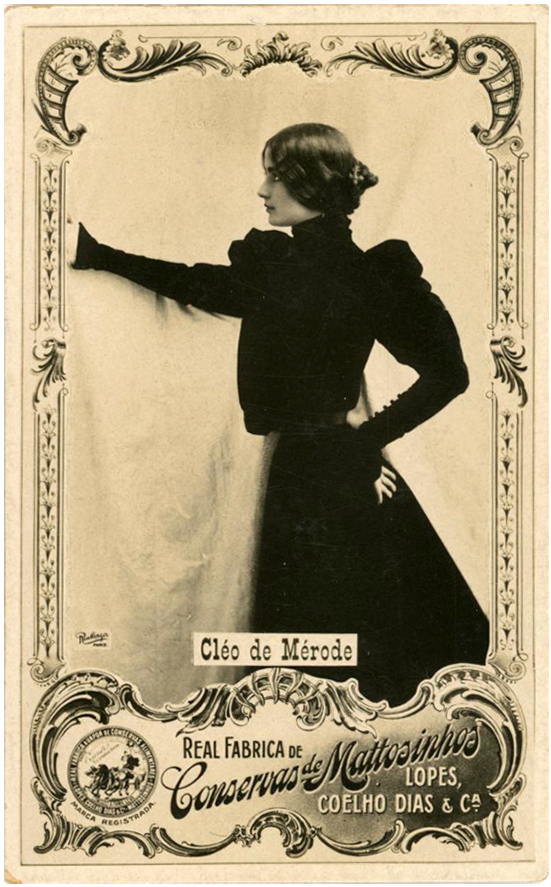Victorian Trade Cards da Real Fábrica de Conservas de Mattosinhos - Cléo de Meróde
Lopes, Coelho Dias & Cª Ltda
Matosinhos – Portugal
Size 5 cm x 8 cm
Cléo de Mérode
Born in an aristocratic family, Cléo de Mérode pursues an artistic path and trains at the dance school of the Opéra de Paris while she soon appears on various Parisian stages where her legendary beauty seduces many famous figures such as the King of Belgium, turning her into a seductive courtesan. Posing for many photographers who diffuse her image worldwide, in newspapers and postcards, she is elected Beauty Queen in 1896 among various celebrities. The same year, she enhances her fame when a white marble sculpture, La Danseuse, by Alexandre Falguière, is said to have been moulded on her body; facing a public scandal, she claims she only lent her features to the sculpture’s face. During the Belle Epoque, two romantic feminine figures fascinated: the devil and the angel. Cléo de Mérode incarnated the angelic heroine who with her delicate features, posed innocently for holy-like pictures that made her look like a virginal Eve. Inspiring such artists as Edgar Degas and Paul Klee, the dancer defended her immaculate reputation and diffused a mysterious, romantic and melancholic aura that far from the usual 1900s beauty ideals, evoked more of a Renaissance-like aesthetic.
https://theredlist.com/wiki-2-24-525-770-925-view-1900s-1-profile-cleo-de-merode.html
https://en.wikipedia.org/wiki/Cléo_de_Mérode


Victorian Trade Card
Victorian trade cards are an early form of collectible advertising. Trade cards originated in England in the 1700s with tradesmen advertising their wares. But the advent of lithography in the 1870s made it possible to mass-produce them in color, leading to a golden age from 1876 to the early 1900s when halftone printed newspaper and magazine ads became more economical. Trade cards typically had a picture on one side and an ad on the other. There were custom cards printed for specific products, and stock cards which could be used for any product. Trade cards were popular for medicines, sewing, and farm equipment, and a range of other products.

